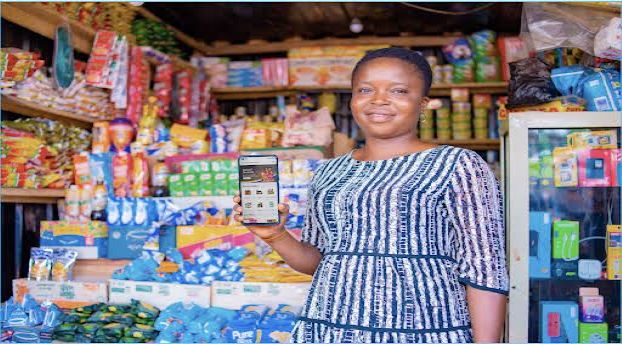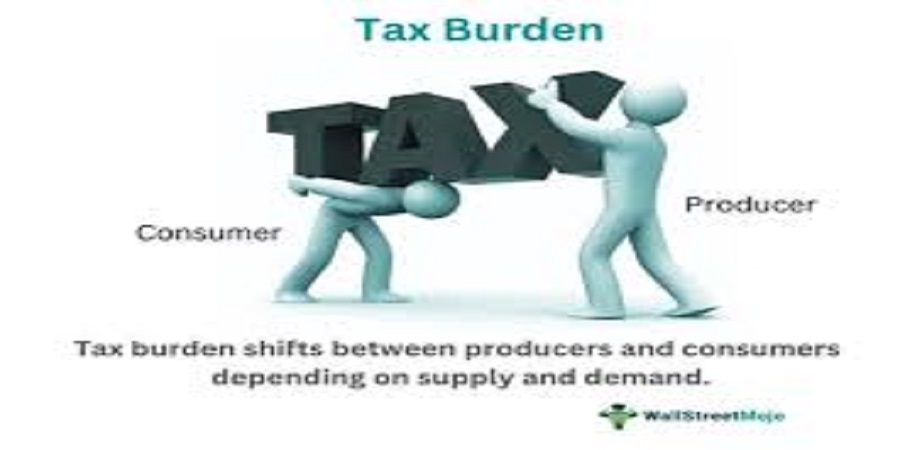Telecom
Fixed Wireless Access Unlocks a World of Opportunity

By Chafic Traboulsi
5G networks are now being built out, with performance and capacity gains available to be tapped by new use cases. One of the first will be fixed wireless access (FWA). Around half of all households in the world – over 1 billion – do not have a fixed broadband connection.

Given the current speed and capacity of cellular networks with LTE and its evolution to 5G, there are opportunities for operators to deliver broadband services to homes and small and medium-sized enterprises economically using FWA.
Fixed wireless access (FWA) connections are forecast to grow threefold and reach close to 160 million by the end of 2025, accounting for 25 percent of total mobile network data traffic globally, according to Ericsson Mobility Report.
FWA in the broadband context
There are approximately 2 billion households in the world. By the end of 2019, approximately 1.2 billion (60 percent) had a fixed broadband connection, and by the end of 2025 this will reach approximately 70 percent.
In this context, FWA will represent 10 percent of fixed broadband connections. However, it is worth mentioning that FWA is also seen as a replacement option for around 300 million existing DSL connections.
Considering the number of FWA connections, many households consist of several individuals using the same connection. However, in the mobile broadband context, there are more connections than individuals. The forecast of close to 160 million FWA connections by the end of 2025 represents approximately 570 million individuals having access to a wireless broadband connection.
There are three main factors that drive the FWA market and the uptake of connections:
- Demand from consumers and businesses for digital services continues, driving the need for broadband connectivity.
- FWA delivered over 4G or 5G is an increasingly cost-efficient broadband alternative in areas with limited availability of fixed services such as DSL, cable or fiber. Increasing capacity – allowed by greater spectrum allocations and technology advancements for 4G and 5G networks – is driving higher network efficiency in terms of the cost per delivered gigabyte.
- Governments are fueling broadband connectivity through programs and subsidies, as it is considered vital for digitalization efforts and economic growth.
Future Outlook
With the disruption caused by COVID-19, the demand for wireless household broadband has probably never been greater. In a recent study on mobile service provider offerings, 185 out of 309 providers had an FWA offering. Compared to December 2018, this number has almost doubled.
We estimate there were 51 million FWA connections by the end of 2019. This number is forecast to grow threefold through 2025, reaching close to 160 million. FWA data traffic is estimated to have represented around 15 percent of global mobile network data traffic by the end of 2019. This is projected to grow by a factor of around 8 to reach 53EB in 2025, accounting for 25 percent of total mobile network data traffic globally.
With the performance and capacity gains from enhanced mobile broadband and the evolution to 5G, FWA will be an opportunity for communications service providers to deploy in many places.
Previous experience from FWA and fixed broadband has shown that an “unlimited” traffic paradigm does not result in infinite demand and network congestion, but is manageable with a combination of performance-based service offerings and average consumption patterns.
Service providers can start on a clear path to capacity expansion by following a procedure of “utilize, add and densify”. First, network assets already in place should be fully utilized, including radio sites, spare capacity in deployed spectrum and associated radio, baseband and transport equipment.
Next, spectrum and radio network capabilities should be added, such as higher-order modulation, advanced antenna systems and beamforming, increased sectorization and 5G NR access as needed. Finally, densification with the addition of macro and small cells when necessary.
An important aspect to keep in mind is that the results may be quite different from one service provider to another. This means that it is unlikely that a replicable template can be used to define the characteristics that will make FWA attractive in a given market.
Chafic Traboulsi is Head of Networks at Ericsson Middle East & Africa.
Telecom
African Women Hit Hardest as Mobile Internet Gender Gap Persists

African women remain among the most digitally excluded globally, with smartphone affordability and digital literacy among the key barriers. New data from the 2025 GSMA Mobile Gender Gap Report, launched recently, reveals a persistent global gender gap in mobile internet use across low- and middle-income countries (LMICs).

It further notes that literacy, digital skills, safety, and affordability of data also remain critical barriers. The report highlights that 885 million women across these regions still do not use mobile internet, with nearly 60% of them living in Sub-Saharan Africa and South Asia.
While mobile internet is the primary way women in LMICs access the internet, offering critical lifelines to health, education, and financial services, the pace of female adoption has stalled, leaving 235 million fewer women than men connected.
Claire Sibthorpe, head of digital inclusion at GSMA, highlighted that the gender gap had narrowed significantly between 2017 and 2020, but progress flatlined in recent years.
Although 2023 brought a slight improvement, restoring the gap to 15%, 2024 saw minimal change, with the gap settling at 14%.
The disparity is most severe in Sub-Saharan Africa, where women are 29% less likely than men to use mobile internet.
“It’s disheartening that progress in reducing the mobile internet gender gap has stalled. The digital divide is driven by deep-rooted socio-economic and cultural factors that disproportionately impact women,” said Sibthorpe.
GSMA projects that closing the gender gap by 2030 could add $1.3 trillion to GDP across LMICs and deliver $230 billion in revenue to the mobile industry.
The report, funded by the UK FCDO, Sida, and the Gates Foundation, stresses the urgent need for targeted investment and policy action to bridge the digital divide and ensure that no woman is left offline.
“The mobile internet gender gap is not going to close on its own. It is driven by deep-rooted social, economic, and cultural factors that disproportionately impact women,” said Sibthorpe.
Telecom
Telcos Worry over Possible 5 Percent Tax Return

Nigeria may bring back a 5per cent excise tax on telecom services, according to the 2024 Finance Bill passed by the Senate last week.

Gbenga Adebayo, chairman, ALTON
The tax would apply to data transmission and voice calls.
First introduced in 2020 under the Mohammadu Buhari administration to widen the tax base, the measure was suspended in 2023 by President Bola Tinubu due to rising inflation.
With the budget under pressure, the government is now considering reinstating it.
Telecom operators warn that the tax would raise service costs and make it harder to close Nigeria’s digital divide, which still leaves more than 40% of the population without internet access.
Gbenga Adebayo, chairman, Association of Licensed Telecoms Operators of Nigeria (ALTON), said the proposal lacks detail and would increase the financial burden on users.
“We’ve had no clarity on how the 5% tax would be implemented, but the burden will fall on the consumer. Telecoms should be treated as a social good, not taxed like luxury items. No one taxes telecoms like this in countries where infrastructure is taken seriously,” he said.
ALTON also noted that operators are already subject to 54 different taxes nationwide.
The Nigerian Communications Commission (NCC) has not yet received the official version of the bill for review.
Telecom
GSMA Urges Governments to Prioritise Affordable Spectrum Costs to Support Global Digital Growth

The GSMA released its latest ‘Global Spectrum Pricing Report’, highlighting that average spectrum prices have not reduced in line with operator revenues over the last decade — putting significant pressure on their ability to invest in essential network infrastructure.

The report shows that, whilst both consumer prices for mobile services and the average cost of spectrum have fallen, the overall cost burden on mobile network operators (MNOs) has actually risen sharply. Global cumulative spectrum costs now account for 7% of operator revenues, a 63% increase over the past ten years.
Meanwhile, the average revenue generated per megahertz (MHz) of spectrum has declined by 60% over the same period. Although costs per MHz have fallen by up to 75% in some bands since 2014, operators have increased spectrum holdings by 80% over the same period to cope with bandwidth demand, driving up the overall cost.
A gigabyte of data is far more affordable today than ten years ago, with operators experiencing a staggering 96% fall in revenue per GB between 2014 and 2024. However, these falling revenues, when combined with the proportionately high cost of acquiring spectrum, restrict operators’ ability to invest in expanding and improving mobile networks, particularly 4G and 5G. The report shows that higher spectrum costs correlate directly with lower network coverage and reduced mobile speeds, impacting consumers and slowing the development of digital economies worldwide.
Vivek Badrinath, Director General of the GSMA, said: “The mobile industry sits at the heart of the digital economy, enabling services and opportunities that transform lives. But a dollar can only be spent once, and high spectrum costs can choke investment at a time when the need for affordable, reliable connectivity has never been greater. Governments and regulators must prioritise spectrum pricing that reflects market realities and fosters long-term digital growth. By ensuring spectrum is affordable, they can unlock faster network expansion, better service quality, and greater digital inclusion for all of their citizens.”
The Global Spectrum Pricing Report also highlights that public policy choices — such as setting artificially high reserve prices, creating artificial scarcity, and attaching onerous licence obligations — have often contributed to inflated spectrum costs. In some countries, spectrum costs can reach as high as 25% of operator revenues.
The GSMA urges policymakers to adjust spectrum prices in line with current market conditions and the economic realities faced by operators. With nearly 1,000 spectrum licences set to expire worldwide by 2030, upcoming renewals present a critical opportunity to reset pricing policies to drive investment in the next generation of mobile networks.

 News2 days ago
News2 days agoStakeholders Seek Strengthening of Digital Infrastructure @ IoT West Africa

 Telecom2 days ago
Telecom2 days agoAirtel Introduces Full Shopping Experience Within My Airtel App

 General News2 days ago
General News2 days agoLagos Slush’D 2025 To Promote Creativity among Start-ups

 E-Business2 days ago
E-Business2 days agoQ1 2025 .ng Domain Name Statistics Reflect Nigeria’s Advancing Digital Landscape

 General News2 days ago
General News2 days agoJumia Expands Delivery Service to Nigeria

 General News1 day ago
General News1 day agoNITDA Advocates Strategic Partnership in Research to Unlock Nigeria’s Digital Potential

 Telecom1 day ago
Telecom1 day agoGSMA Urges Governments to Prioritise Affordable Spectrum Costs to Support Global Digital Growth

 Telecom1 day ago
Telecom1 day agoSophos Launches MSP Elevate Program to Boost MSP Growth and Profitability




























